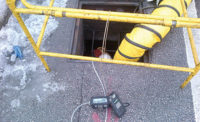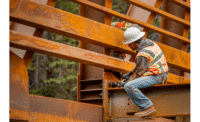Detection Decisions
Pick the right gas instruments & accessories

What type of instruments would be best for the crew?
Do they need single- or multi-gas monitors?
Diffusion or aspirated?
Portable instruments or a fixed system?
What accessories I should consider?
Do I know all of the potentially hazardous gases faced by the crew in the refinery?
The right instrument
After a few discussions with the plant management and crew, I learned that the possible gases the crew could encounter varied widely. However, the most commonly found gas at our refinery would be H2S. Because of the large number of workers that require monitoring throughout the refinery, the best instrument for the application was a single-gas monitor.
Acquiring accessories
Next, I had to consider the accessories needed to support my gas detector fleet. Should I order an instrument pump now, in the event sampling will be conducted? How much calibration gas should I purchase? Do I need demand flow regulators? Would a docking station prove to be beneficial or should I just purchase desktop chargers?
One of the first things I had to consider was whether to purchase a calibration station or if a calibration cup would be sufficient. I know that with a calibration station, I could increase safety with consistent calibrations and bump tests at the touch of a button. I wouldn’t have to rely on a crew that has several other responsibilities to perform critical instrument maintenance tasks. Also, the calibration station would automatically recharge the monitor’s battery each time the unit is docked so that it would always be prepared for use. Lastly, using a calibration station, I could download the monitor data. I recently attended a webinar regarding the importance of reviewing gas monitor data. In it, I learned that reviewing the data allows me to know if my monitors are working properly, if they’re being used properly, and what hazards workers are exposed to.
Instead of using a calibration station, another option was to use a docking station. It also performs instrument calibrations and bump tests, but the tasks can be scheduled to occur automatically rather than performing them manually. Docking stations can also perform instrument diagnoses, and identify things like faulty sensors. Another benefit of docking stations is the amount of data storage available. As mentioned, the data can tell me an abundance of information about my gas detection program. Further, robust storage space can hold information over longer periods of time and can be available for future safety compliance reports.
I found out that the amount of calibration gas cylinders that should be purchased depends on many variables including how many instruments it will support, whether it will be used with calibration or docking stations, how often calibration and bump testing will occur, etc. Gas cylinders are available in a variety of sizes and concentrations, and each has its own expiration date to consider. I’ve also been told that a demand flow regulator works extremely well when using a calibration or docking station. The demand flow regulator is simple and easy to operate, providing the proper flow rate of gas for the calibration of instruments.
Given the needs of the refinery, I decided to choose the docking station because of the amount of data storage available for future retrieval for safety compliance reports. I purchased two gas cylinders for each docking station until I can calculate the demand for gas. I also purchased one demand flow regulator for each docking station and two spares.
Environmental effects
Finally, I needed to consider the environment of the refinery and in what conditions the monitors would be used. In an application where moisture is a concern, the IP (ingress protection) rating of the monitor can provide some insight into its durability in these conditions. The second number in the IP rating relates to the water resistance of the monitor on a scale from one to eight. The higher the number, the more resistant the monitor is to these conditions. On the other hand, it is important to be aware of dry conditions. The electrochemical sensor requires a minimum amount of humidity to function properly. These sensors require a minimum of 15 percent humidity so that they function normally and do not dry out.
I also questioned if the instruments would be exposed to dust and dirt. In applications where dust and dirt are concerns, the IP rating of the monitor can provide some insight into how durable it will be when used in these conditions. The first number in the IP rating relates to the dust resistance of the monitor on a scale from one to six. Once again, the higher the number, the more resistant the monitor is to these conditions.
For the refinery, the monitors needed to be highly resistant to moisture due to our local climate and extremely durable against dust.
Informed decisions
These considerations are only a few that should be made when implementing a gas detection program into any organization. In addition to the mentioned considerations, companies often have specific needs and preferences that can guide your decision-making. But when putting together all of the factors that I have discovered along the way, I felt I was prepared to make wise decisions regarding the refinery’s gas detection program.
Today, the crew is using single-gas personal monitors with H2S sensors and with a high IP rating of 56 for humidity and dirt concerns. For automatic calibration, bump testing and recordkeeping, I chose to implement docking stations into the program. I also chose a mid-size calibration gas cylinder with a demand flow regulator, a higher IP rating of 67 for my humidity and dirt concerns, and a backlight display.
Throughout this process, the most valuable lesson I learned is to pay attention to the specific needs of the crew and to ensure, above all else, that the instruments and accessories made available to them will ultimately keep them safe.
*This character is fictional for the purposes of this article.
Looking for a reprint of this article?
From high-res PDFs to custom plaques, order your copy today!






